
Illegal Disposable Vapes: The Hidden Dangers Lurking on Store Shelves
Did you know that, according to the BBC and Trading Standards, 1 in 3 disposable vapes sold are illegal?
As we’ll see in this article, unregulated disposables are often sold by the same people who sell vapes to children, are potentially dangerous and are doing huge damage to harm reduction and vaping’s reputation.
Fortunately, it's not hard to identify an illegal disposable vape once you know how!
Here’s why illicit vapes are an issue, and how you can easily identify and avoid them…
Contents
- Why illegal vapes are an issue
- How to identify a non-compliant disposable vape
- Wrapping up Related postsRelated products
Why illegal vapes are an issue
Safety
Based on multiple, in-depth reviews of the evidence, the UK government has stated that vape devices are far less harmful than smoking.
What’s more, over time vape devices have improved significantly.
Our knowledge of what might cause any residual harm in e-liquid has also improved, and manufacturers who care about harm reduction are working hard to eliminate potentially harmful elements.
However, it is unlikely that retailers who stock non-compliant devices (and often sell to children) give a flying fig about quality.
Yet, the whole point of vaping is to reduce the harm from smoking. In order to maximise the benefits, it's important to buy legal devices.
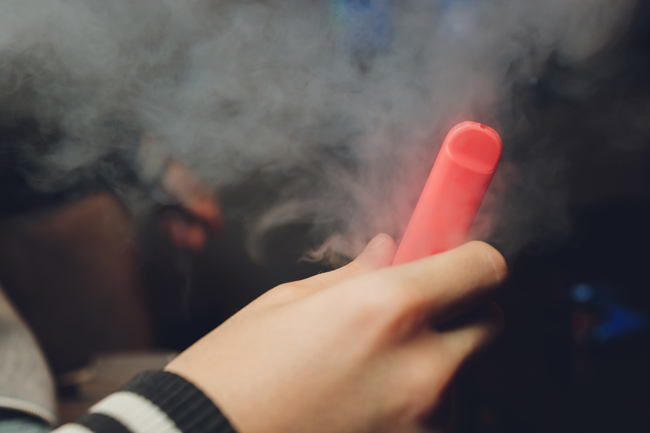
Buying illegal vapes support sellers who market to children
Those same sellers who flog illegal vapes frequently sell to adolescents.
When you buy unregulated vapes from these people, you are supporting their businesses.
They’ll often be making bigger profit margins too, as they won’t be paying taxes on illegal devices.
While we want smokers to switch to vaping, we don’t want vaping to be a way to introduce young people to nicotine. After all, the idea is to reduce harm, and while vaping is vastly less harmful than smoking, no one is arguing it is harmless.
So by avoiding buying from these sellers, you can withdraw financial support to people who are undermining the very idea and integrity of vaping.
Nicotine levels
Buy from a reputable seller and you will have a good idea of what the nicotine level is.
The same cannot be said for illegitimate devices.
It’s true the nicotine limits on vaping in the UK are too low for heavy smokers switching to vaping.
However, it’s also important to know how much nicotine is in e-liquid.
Without knowing that, you could take in too much nicotine and end up feeling woozy and sick.
You could also unknowingly increase your nicotine addiction, even though many vapers are trying to slowly decrease the amount of nicotine they use.
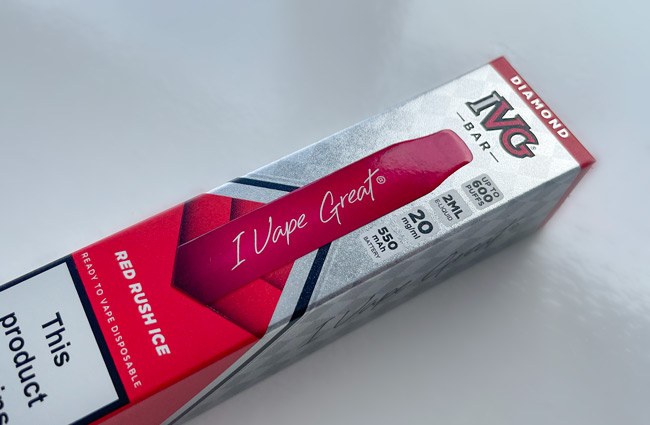
Undermining the legitimate industry
For vaping to succeed, it needs a strong, reputable and legitimate industry. An industry that can explain the benefits of vaping, improve quality and safety standards and fight for sensible regulations that benefit vapers and smokers.
Illicit products take money away from the legitimate industry and put it in the hands of criminals (who are likely often involved in other illegal activities).
It's challenging the very ability of some independent shops to survive.
1) Regrettably, I will be closing down my business shortly. I've written over 100 blogs, offered incentives, but I cannot compete with the website and shops selling 10,000 puff illegal vapes. I started my business hoping to pass on my story and knowledge to others.
— Darren Squires (@squirevapeco) April 10, 2023
What’s more, the media reporting on illegal vapes rarely distinguishes between the people trying to follow the law and those breaking it.
This tars vaping with a negative image and leads to an increased likelihood of restrictions, flavour bans and more on vaping devices.
How to identify a non-compliant disposable vape
Puff count
A fairly easy way to identify an illegal vape is to look at puff count.
First, though, it’s not true that there is a legal limit on puff counts. Disposable vape devices should simply contain a maximum of 2ml of e-liquid.
That’s often translated into a puff count, usually around 600. The reality is that the number of puffs you will get will vary depending on factors like how long you puff for and how hard you inhale.
However, devices with huge puff counts, such as 3000 or 6000, are a sure sign that it contains more than 2ml and is therefore illegal under EU and UK regulations.
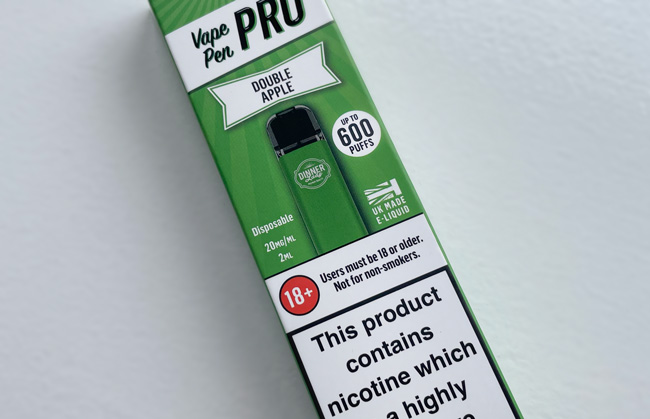
Pod size
Following on from that, it’s also worth looking at the size of the pod (the part that contains e-liquid).
Once you get used to seeing the pod size of legitimate devices, you will quickly be able to recognise illegitimate devices.
Where are you buying it from?
When you buy devices, look for signs a retailer is reputable.
Do they have a Challenge 25 or 21 poster up? Are they challenging people who look young? Do they reach under the counter to retrieve disposable devices that are not displayed?
Established retailers dedicated to vaping are usually more reliable than a backstreet corner shop.
Look for signs that they are members of a trade organisation - members of the IBVTA and the UKVIA have to keep to a strict code of conduct in order to maintain membership.
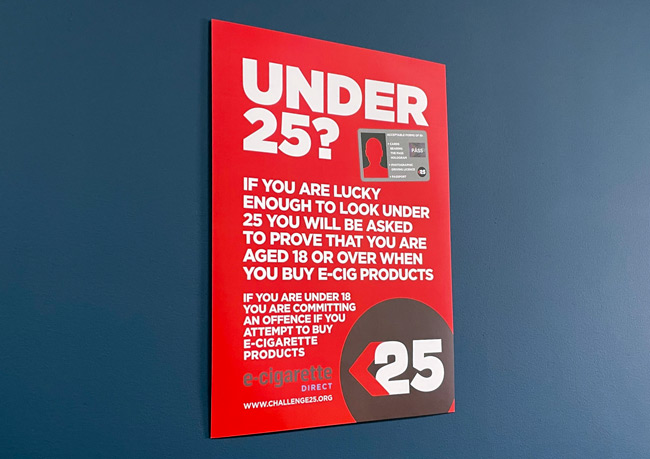
Warning labels
By law, all vaping devices containing nicotine must contain a label stating that the device contains nicotine.
If there’s no label, and the device contains nicotine, the device will be illegal.
- All products containing nicotine must state ‘This product contains nicotine which is a highly addictive substance’. The legal limit in the UK is 20mg per ml.
- At concentrations between 3 and 16 mg per ml the packaging must carry a warning message and pictogram (exclamation mark in red triangle).
- At concentrations between 16 and 20 mg per ml the packaging must carry a danger message and pictogram (a skull and crossbones in a red triangle).
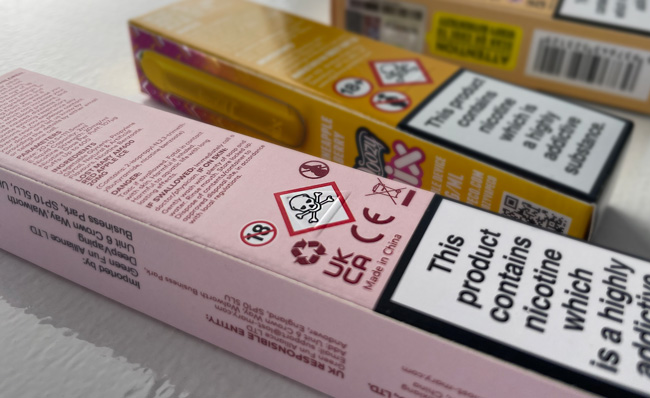
Other labels
Other labels you will see will include:
- An 18-restricted age label (for nicotine-containing vapes)
- A C/E Mark
Nicotine strength
A legitimate device also needs to display its nicotine strength. It should typically either come in a box with a leaflet or have ‘peel and reveal’ label too.
The nicotine strength needs to be displayed in mg/ml (milligrams per millilitre.)
Again, if it doesn’t have any of these, it’s not compliant.
MHRA website
You can also check on the MHRA website to see if your device is listed.
However, this is likely to be the most time consuming method.
By following the previous steps, you should be able to identify an illegal device without need to check it on the MHRA.
How to identify a genuine disposable vape.
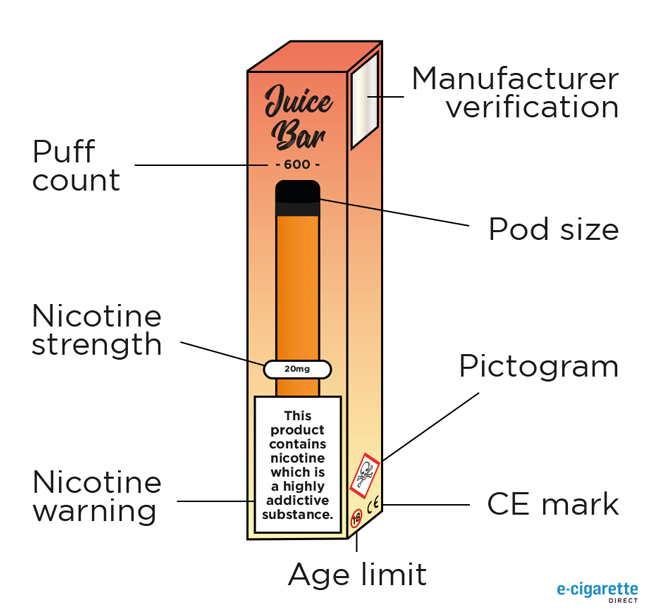
Less reliable methods
Manufacturer verification (with a word of caution)
Some manufacturers also have verification methods on their devices.
These often take the form of a scratch panel. You scratch the panel to reveal the number, scan a QR code and enter the number to check it is valid.
While this should work for most devices, these systems are not always foolproof.
For example, we have entered a code for a valid device into a manufacturer before, only for it not to be recognised.
As manufacturers' verification systems are not always reliable, this method is one of the least dependable.
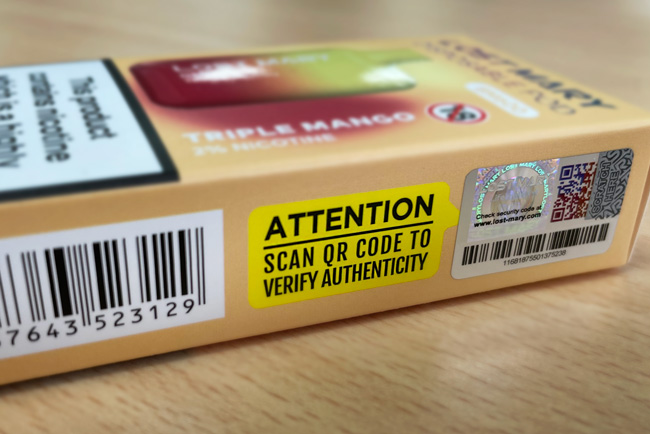
Brand
It’s also true that there are certain brands to look out for which are often sold illegally.
Unfortunately, the problem here is that some brands have legitimate versions.
For example, I know one brand which is sold illegally with massive puff counts, but also has legal and compliant versions sold in the UK.
It’s also true that some registered brands have sold overfilled devices, although at least they are working with the MHRA to rectify this.
One option is to buy from UK brands, such as Doozy Vape Co. and Riot Squad.
Chinese brands that are not known to sell illegal products (although they have been overfilled at times!) include Elf Bar, Lost Mary, and SKE.
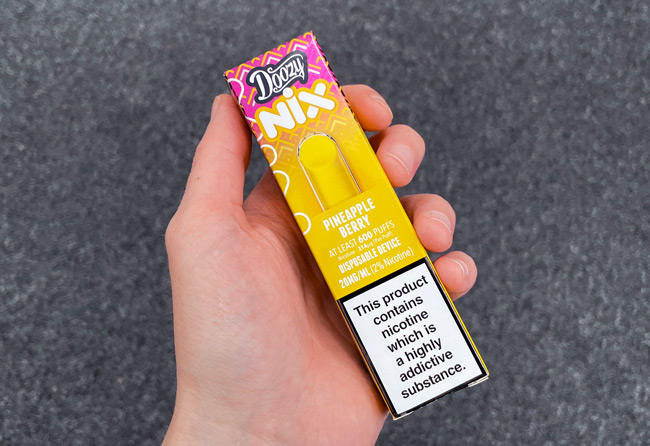
Wrapping up
Choosing to buy a legal vape is important for both you and for vape harm reduction.
By following the steps we’ve listed here, you should easily be able to identify illegal devices and avoid them.
It’s also worth considering going one step further and switching from disposable devices to refillable devices to save hundreds of pounds a year AND reduce harm to the environment.
There’s a few simple things that can help you do this, so check out our guide to switching from disposables to refillable devices next!